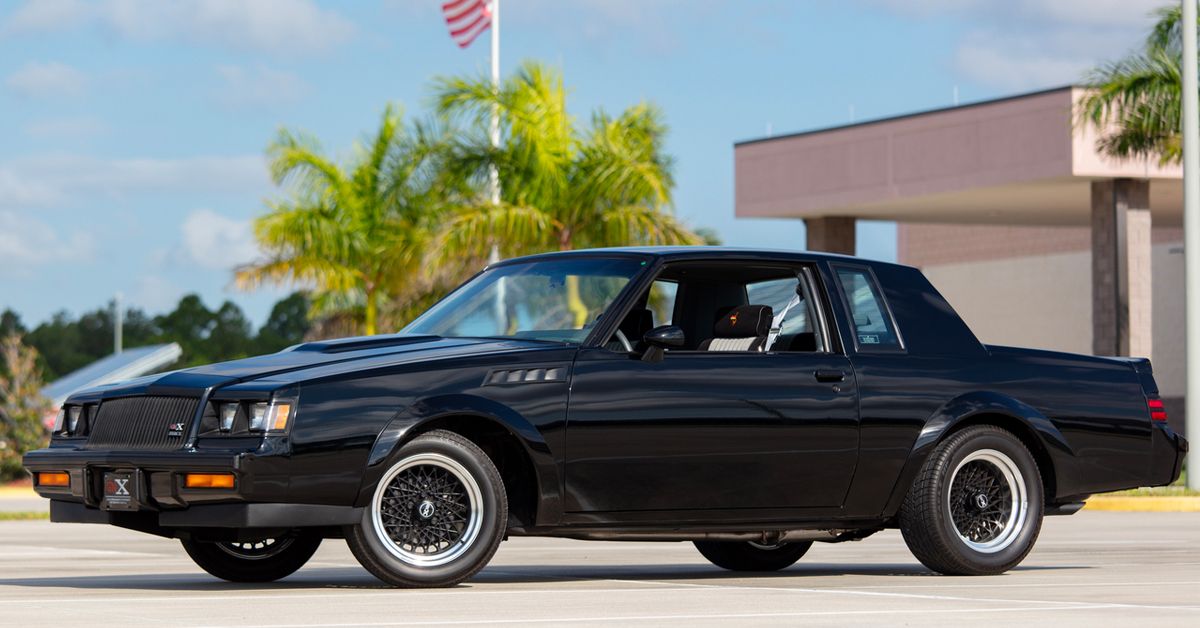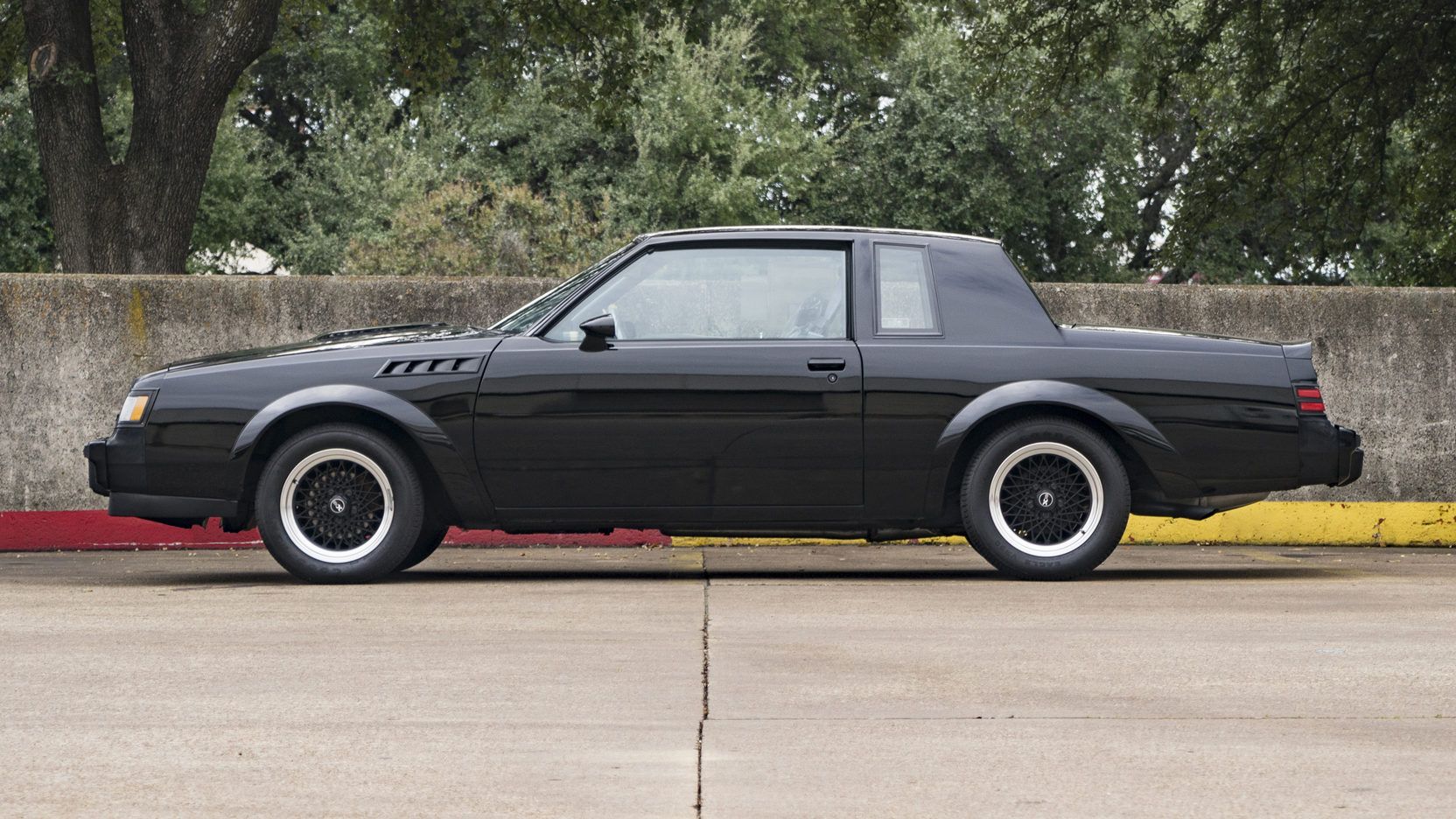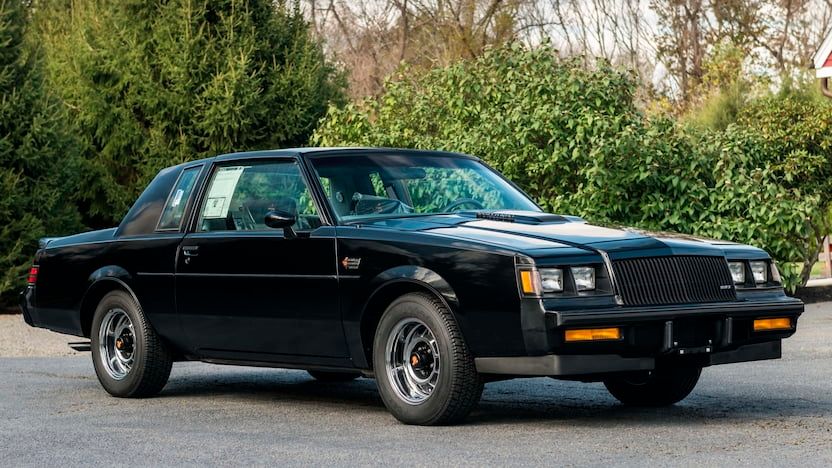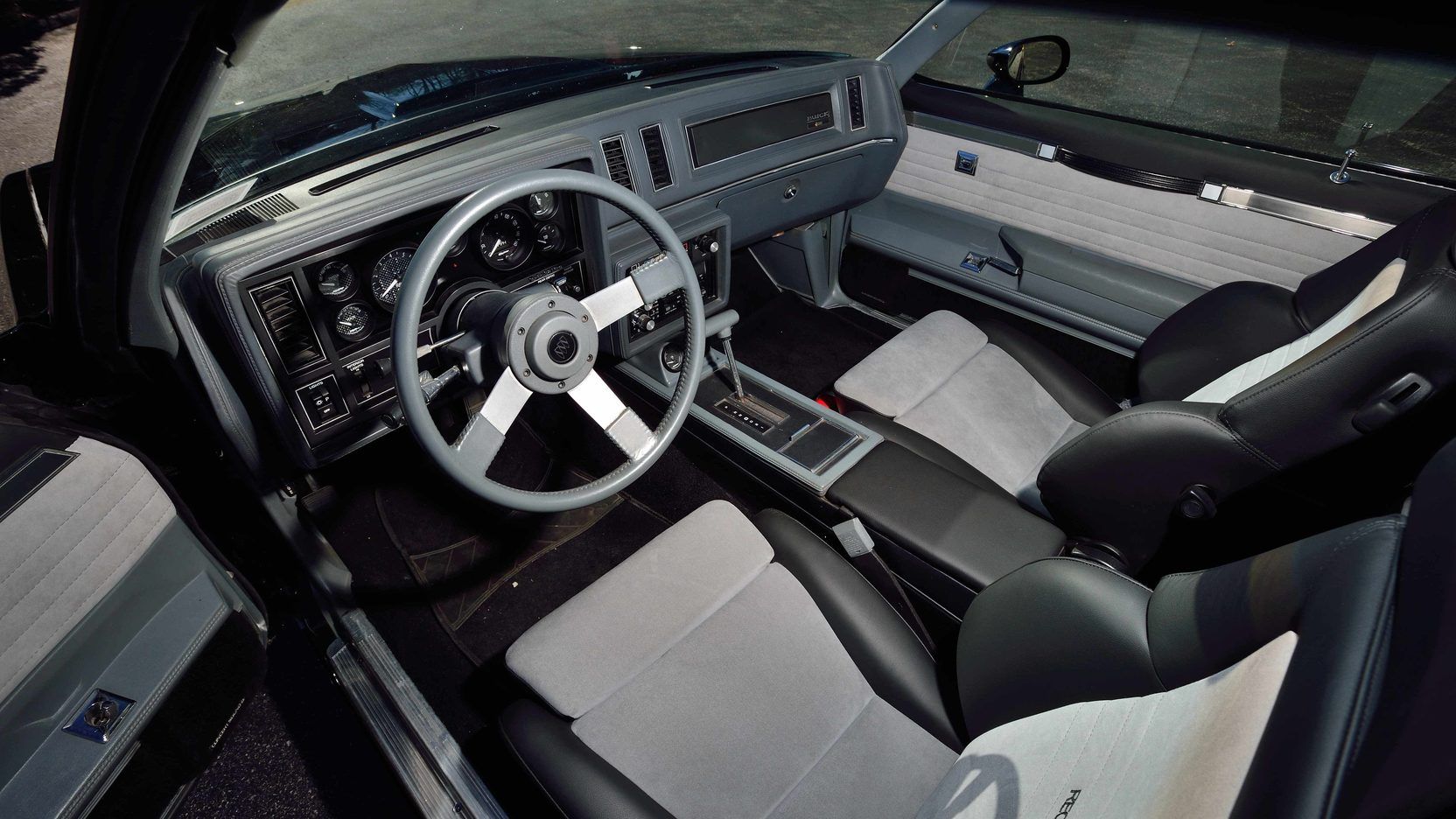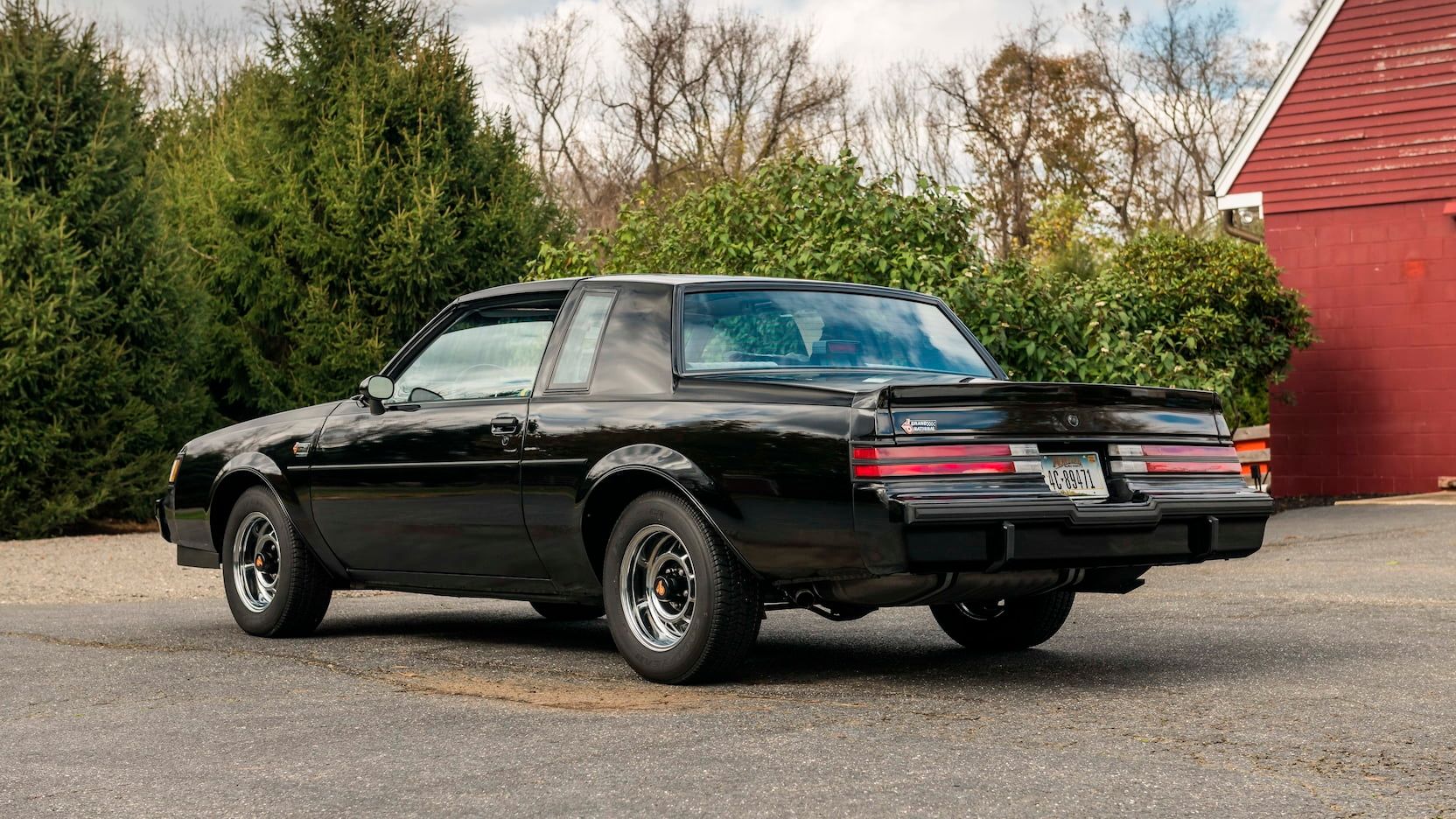Born during the tail end of the Malaise era when muscle cars were all but neutered of their V8 power, few if any American cars of the '80s are as badass as the Buick Grand National, both on their debut, and to this day. Starting off as not much more than a special appearance package for the otherwise mediocre 2nd gen Buick Regal, the Grand National would get more and more beastly in the years following its debut, truly coming into its own during 1986 as a performance killer that annihilated not only other muscle cars but even the European competition in the quest for speed and power.
An unlikely muscle engine, the Grand National went down a rather logical route to skirt heavy-handed regulations that stripped V8s of their power, instead using a turbocharged V6 to make its power. Remembered not only for that power, the Grand National is a legend of its time for the brutal, blacked-out angular looks, standing the test of time as a badass design.
Lasting only a few years, and sent off with the even wilder GNX, the Regal went from yawn-inducing commuter to tire-shredding monster under the Grand National name, solidifying its place in history as a true classic.
G-Body Greatness
A staple nameplate for Buick, the Regal was a fairly nice personal luxury car on its 1973 debut, but got rather bland in the '80s, being a commuter that wasn't really anything too special. But, riding on the G-Body from 1981 onwards, the Regal and its G brothers like the Pontiac Grand Prix are often seen as some of the last true old-school muscle cars with their simple RWD layout, leaving at least some charm left.
First appearing in 1982 for the 2nd year of the G-Body regal, the Grand National nameplate was used to celebrate the Regal's back to back '81 and '82 manufacturer's title wins for Buick in NASCAR's Winston Cup Grand National Series (renamed to just "Winston Cup" in '86). Not much more than some spruced up appearance tweaks, the first Grand Nationals mainly involved new aerodynamic elements, paint, and some other small touches, the new Grand National was unveiled at the 1982 Daytona 500, and only 215 were made that year.
Debuting with the 2nd gen Regal in 1978 though, a turbocharged V6 was offered on the car making around 165 hp, and this would be the basis for the true Grand National. Fast-forwarding to 1984, the Grand National nameplate made a return as a true performance package. Sold only in black, the '84 Grand National tuned and tweaked that rather tame turbo V6 to make 200 hp, which was on par with a V8 Corvette of the time, and 2,000 were sold that year. Returning mostly unchanged for '85, the most legendary iteration of the Grand National would follow in 1986.
Developing new intakes and an intercooler for the engine, the '86 Grand National debuted with a whopping 235 hp and 330 lb-ft of torque, brutally outclassing most competition it faced and selling 5,512 that year.
Finally, in '87 the Grand National saw its last year, making an even greater 245 hp and 355 lb-ft torque, beating down the '87 Mustang GT's 225 hp and 300 lb-ft torque, and selling 20,740 units that year.
The Groundbreaking GNX
While it wasn't V8 powered, the RWD Grand National was as proper a muscle car as the time saw, outclassing American icons like the Corvette and Mustang, with a uniquely badass formula. Reaching its peak for the final year of 1987, not only were the most Grand Nationals made that year, but also the most epic form it would take debuted as well under the GNX (Grand National Experimental).
Converting 547 examples of the '87 Grand National, the GNX was built with ASC/McLaren's help to turn it into the most brutal, fastest car in GM's stables. Upgrading the turbo with a bigger one from Garrett, freeing the intake and exhaust airflow, and tweaking the overall engine response, the GNX got a power boost to 276 hp and 360 lb-ft of torque. Not only upgraded power-wise, the GNX also got a stiffer chassis, new stiffer rear suspension, bigger aluminum wheels and performance tires, a transmission oil cooler, bigger fender flares, and special analog performance gauges, all in all making it a truly special car.
Weighing around 3,400 lbs, the GNX could rip a 0-60 mph time of 4.6 seconds, and do a 13.5 second 103 mph quarter-mile, making it an absolute monster for the time, even outrunning cars like the 1987 Ferrari Testarossa in a 0-60 mph race. True for the "normal" Grand National as well, what made these special Regals so cool though wasn't just the performance, but the blacked-out looks and boxy proportions as well, lending the nickname "Darth Vader's car" to it perfectly. By 1988 though, the Regal ditched the G-Body platform, and switched to the FWD W-Body, marking the GN/GNX as one of the last great examples of true old-school muscle.
An Interior As Cool As The Exterior
Based on the existing Regal, the exterior was overhauled with special touches to make it a badass beast, and the interior is a similar story. Carrying the layout and most design touches of the standard Regal, the Grand National took the wonderfully ‘80s interior to a new level with rounded analog gauges, performance readouts like turbo boost, a sweet 3-spoke steering wheel, and more to make it as sporty inside as it was out.
Bucket seats with a black and white theme grip you tight, and the pseudo-luxury trimmings of the Regal carry over well, completing the sporty yet comfy experience that makes it a unique and classic design.
Features-wise, the Grand National was typical of the ‘80s, and typical of performance cars, offering stuff like air conditioning and a radio, but nowhere near the suite of trim buyers are used to today. Only a 4-speed auto was offered to handle the power, a TurboHydromatic 200-4R with a sweet T-grip shifter.
Pricing From Then To Now
While not a high-end car, the 2nd gen Buick Regal wasn’t dirt cheap, and the Grand National similarly had a high end of the low-end price. For the most epic, prolific, and collectible year of 1987, the Grand National had a base price of $16,617, or the equivalent of $38,745 in today’s money. Fully optioned though, an ‘87 Grand National cost $18,295, or $42,657 today. Compared to modern muscle, the Grand National came at a fair price, with the 2021 Camaro SS having a $37,500 base price.
The GNX though was where it got expensive, costing $29,290 in 1987, which is around $68,294 today. But, like today's special cars like the Dodge Demon, dealers added markups when they were new, as they had to get special allocations to sell one of the limited GNXs, some tacked on almost double the MSRP, making the GNX a nearly 6-figure car in today's money.
Today, the ‘87 Grand National and GNX are the main year of focus for collectors, with ‘87 Grand Nationals costing around $40,000 in good shape, and pristine low mileage ones going for $50,000 and up. GNXs are by far the most costly, selling for between $80,000 and $150,000 depending on condition and mileage.
Sources: Car and Driver, Motortrend, Road and Track

